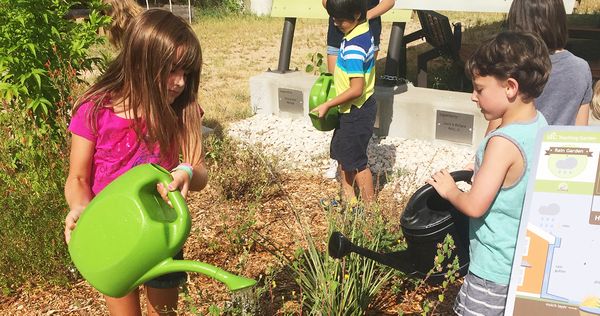The end of the school year is a time to celebrate! The spring vegetables you grew are just waiting to be picked and sampled, and hopefully, this rain has made your plants grow even faster.
All the weeding, watering, and pest-fighting has paid off; it’s now time to taste the fruits and vegetables of your labor. It’s the perfect time to have a harvest party and thank all those who helped to make the garden successful. For school gardens, it’s also the perfect time to create a strategy for what to do with your garden during the hot summer months.
Maintaining the garden year-round is a challenge for schools, especially over summer breaks when the campus is deserted. Gardens that are left unattended often turn into a jungle patch when August rolls around. It can be hard to find the motivation to start the fall garden when the beds are full of weeds. It’s important to plan ahead and ensure that your garden will be ready for the fall planting season.
There are two main approaches to a smooth transition between the school year and summer breaks. The first approach is to entrust garden care to parents and community members who live nearby in exchange for the opportunity to take home any harvest produced. Consider asking the maintenance staff if they would be willing to water in exchange for harvesting. Be sure to create a watering schedule and post it in a visible place near the garden along with clear instructions on how to water properly and who to call in case of a water emergency (e.g. a hose leak).
Another approach is to put gardens “to sleep.” Putting gardens to sleep is a simple approach that requires pulling out the existing plants and either heavily mulching the beds (use three to four inches) or planting a dense cover crop. A cover crop is a plant that requires little to no maintenance and completely covers the garden area.
Both mulching and using a cover crop prevents weeds from taking over the beds and builds the quality of the soil. To “wake up” garden beds in the fall, simply rake away the mulch or, two to three weeks before planting, uproot the cover crops, allow them to dry in the sun, and turn them about an inch under the soil to boost your soil’s health for another year of school gardening.
Common cover crops to use for summer include: alfalfa, Alsike clover, Crimson Clover, Red clover, White clover, annual ryegrass, buckwheat, oats, and cowpeas. As a bonus, planting a cover crop returns nutrients like nitrogen to your soil and builds soil health for fall planting.
Whether you choose to maintain the garden over the summer or put it to sleep, we hope you make the time to celebrate the past school year’s accomplishments in the garden and appreciate big and small successes.

